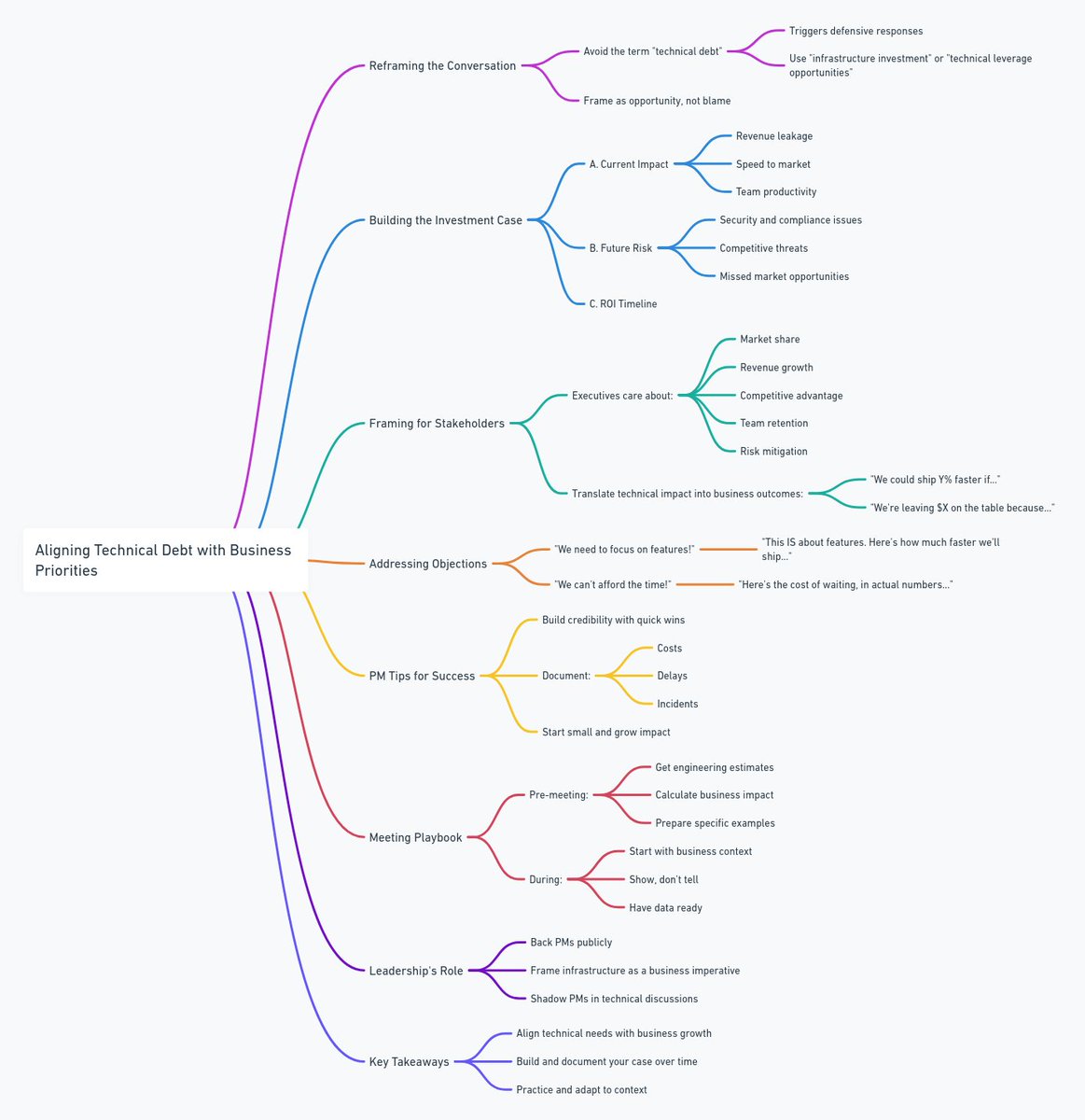The number 1 mistake ex-engineers make in PM roles:
Prioritizing possibility over value.
Let's uncover this fallacy and reverse it in just 3 minutes. 🧵
Prioritizing possibility over value.
Let's uncover this fallacy and reverse it in just 3 minutes. 🧵
1/ the engineering brain is wired to ask "can we build this?"
feasibility becomes the primary filter.
technical complexity becomes exciting.
user value becomes secondary.
this creates predictable patterns:
feasibility becomes the primary filter.
technical complexity becomes exciting.
user value becomes secondary.
this creates predictable patterns:
2/ the ex-engineer pm gets excited about machine learning recommendation engines while users abandon the app because basic search returns no results.
they architect elegant microservices while user research sits unread on their desk.
they architect elegant microservices while user research sits unread on their desk.
3/ ever heard about "what got you here won't get you there"?
this is why these career transitions can take years to settle
the first 2-3 years you're still driving down the old train tracks wondering why you're not getting where you want to be
this is why these career transitions can take years to settle
the first 2-3 years you're still driving down the old train tracks wondering why you're not getting where you want to be
4/ engineering excellence without user value is just expensive art.
the cost compounds quickly, and after the initial excitement, you're sitting there questioning your career change
meanwhile, product-minded pms win by starting with different questions.
the cost compounds quickly, and after the initial excitement, you're sitting there questioning your career change
meanwhile, product-minded pms win by starting with different questions.
5/ the value-first framework:
step 1: what job are users hiring this feature to do?
step 2: how do we know this job matters to them?
step 3: what's the simplest way to test if solving it creates value?
step 4: only then ask: how might we build it?
this sequence protects against the feasibility trap.
step 1: what job are users hiring this feature to do?
step 2: how do we know this job matters to them?
step 3: what's the simplest way to test if solving it creates value?
step 4: only then ask: how might we build it?
this sequence protects against the feasibility trap.
6/ user problems get validated before engineering starts.
technical solutions serve business outcomes instead of engineering curiosity.
resources flow toward features that drive adoption & revenue.
technical solutions serve business outcomes instead of engineering curiosity.
resources flow toward features that drive adoption & revenue.
7/ here's how this works in practice:
instead of "we could build a recommendation engine with collaborative filtering"
start with "users spend 4 minutes looking for relevant content & 30% leave without finding anything"
instead of "we could build a recommendation engine with collaborative filtering"
start with "users spend 4 minutes looking for relevant content & 30% leave without finding anything"
8/ instead of "we should implement redis caching to improve response times"
start with "checkout abandonment spikes when page load exceeds 2 seconds & we're losing $50k monthly"
start with "checkout abandonment spikes when page load exceeds 2 seconds & we're losing $50k monthly"
9/ instead of "let's refactor this into microservices for better scalability"
start with "customer support is overwhelmed because users can't complete their workflows"
the pattern becomes: problem → impact → solution
start with "customer support is overwhelmed because users can't complete their workflows"
the pattern becomes: problem → impact → solution
10/ engineering background becomes an advantage when channeled correctly.
you understand technical constraints that pure business pms miss.
you can estimate feasibility accurately during discovery.
you can communicate effectively with engineering teams.
you understand technical constraints that pure business pms miss.
you can estimate feasibility accurately during discovery.
you can communicate effectively with engineering teams.
11/ the key shift: use technical knowledge to serve user value instead of technical curiosity.
feasibility checking happens alongside value validation.
technical complexity gets measured carefully against user benefit.
don't bet on a horse that will take years to finish
feasibility checking happens alongside value validation.
technical complexity gets measured carefully against user benefit.
don't bet on a horse that will take years to finish
12/ teams that master this balance build products that scale both technically & commercially.
users get solutions that work reliably & solve real problems.
engineering teams build features that get adopted & appreciated.
stakeholders see clear connections between technical investments & business results.
users get solutions that work reliably & solve real problems.
engineering teams build features that get adopted & appreciated.
stakeholders see clear connections between technical investments & business results.
13/ the ex-engineer pm becomes the product leader who delivers both technical excellence & user value.
i've collected top approaches to value-first product discovery in
($89)prodmgmt.world/products/produ…
i've collected top approaches to value-first product discovery in
($89)prodmgmt.world/products/produ…
14/ the ai prompts for product work collection has specific prompts for validating user problems before technical solutions - might help if you're building this muscle.
($25)prodmgmt.world/products/ai-pr…
($25)prodmgmt.world/products/ai-pr…
your engineering background isn't holding you back.
you're just using it in the wrong order.
value first, feasibility second.
always.
you're just using it in the wrong order.
value first, feasibility second.
always.
• • •
Missing some Tweet in this thread? You can try to
force a refresh






